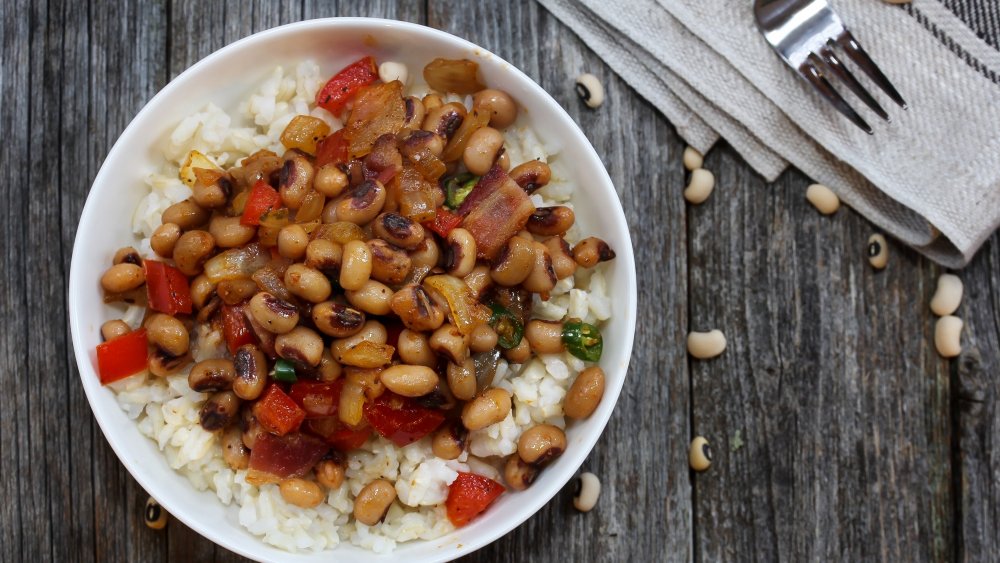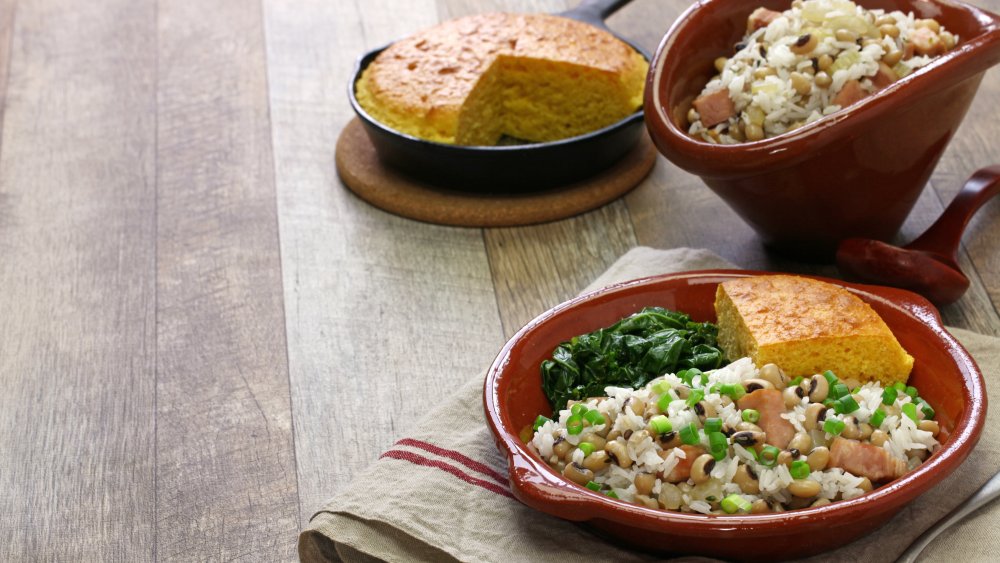What Is Hoppin' John And How Did It Get Its Name?
If you're a homegrown Southerner, then chances are you've at least heard of Hoppin' John, even if it isn't part of your annual New Year's Day meal. The classic New Year's dish includes peas, pork, and rice, and it's been around since the 1800s (via History). The ingredients represent — and are meant to bring — luck, peace, and money in the New Year to those who eat it, though how this belief came about is unclear.
People believe the fare hails from South Carolina's Low Country. The earliest recorded recipes for Hoppin' John can be traced to cookbooks of the 1840s. Southern slaves, however, were cooking it many years before that. One of the main ingredients, peas, was cheap and an easy way to feed slaves, as was rice. It helps explain the origins of the dish, though slaves probably didn't find the dish to be lucky after all.
The name of the dish has a history shrouded in mystery. Some believe it was named after an elderly hobbled man known as Hoppin' John who sold peas and rice in Charleston, South Carolina. Others tell a tale of slave children bouncing around the table as they awaited their serving of the fare. Many food historians think the name comes from a French term, pois pigeons, which described dried peas.
This is what's in Hoppin' John
Hoppin' John is a rather simple dish that was traditionally made with one pound of bacon, one pint of peas, and one pint of rice. The earliest published form of the recipe appeared in Sarah Rutledge's The Carolina Housewife in 1847. She explained that the key is to cook everything together in one pot. But one distinction that you might not know or overlook while making this dish today is that it used to be made utilizing the traditional Carolina method for making rice. The Carolina method used a lot of salted water to boil the rice until the grains were plump. The excess water was drained off and everything in the pot was left to steam over low heat (via Serious Eats). Another key difference is that the peas used in early versions of Hoppin' John were actually "red peas" or "cow peas."
Today, people make it using bacon, black-eyed peas, Carolina Gold rice, and myriad spices and aromatics like garlic, thyme, and cayenne. Also important is the Holy Trinity of Cajun and Creole cooking: onion, bell pepper, and celery, the basis for a wide variety of dishes (via The Spruce Eats). According to Southern Living, the rice is cooked separately from everything else. Then the bacon and black-eyed pea mixture is spooned over the rice when served.
However it's made or served, Hoppin' John, a classic Southern dish, deserves a new appreciation.

